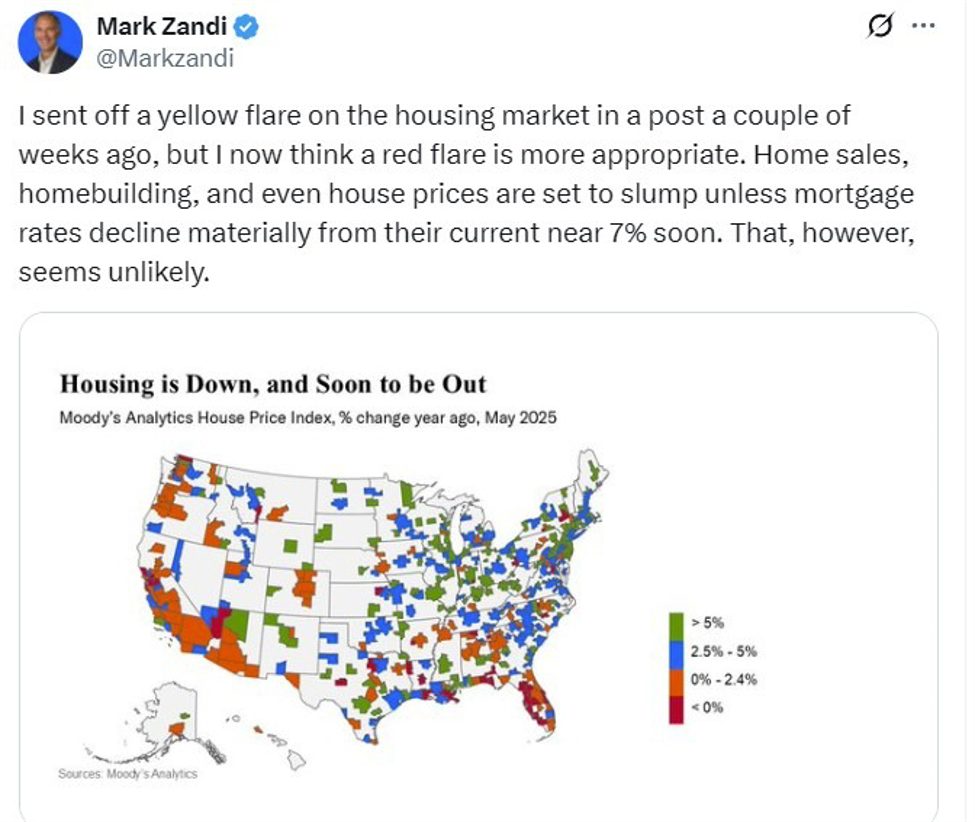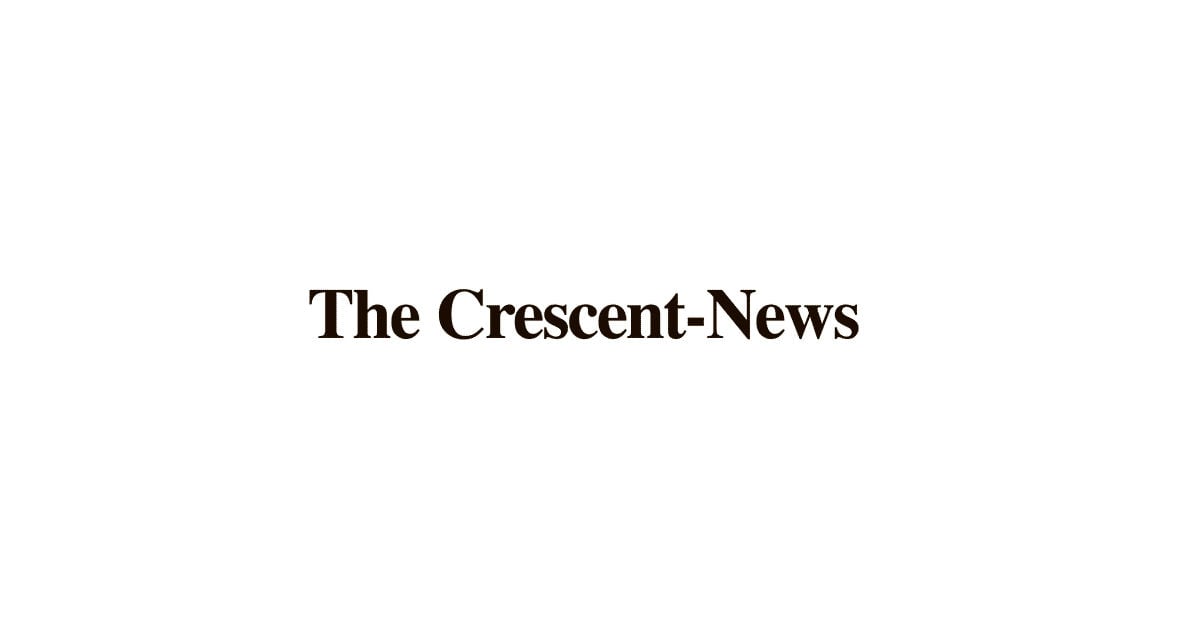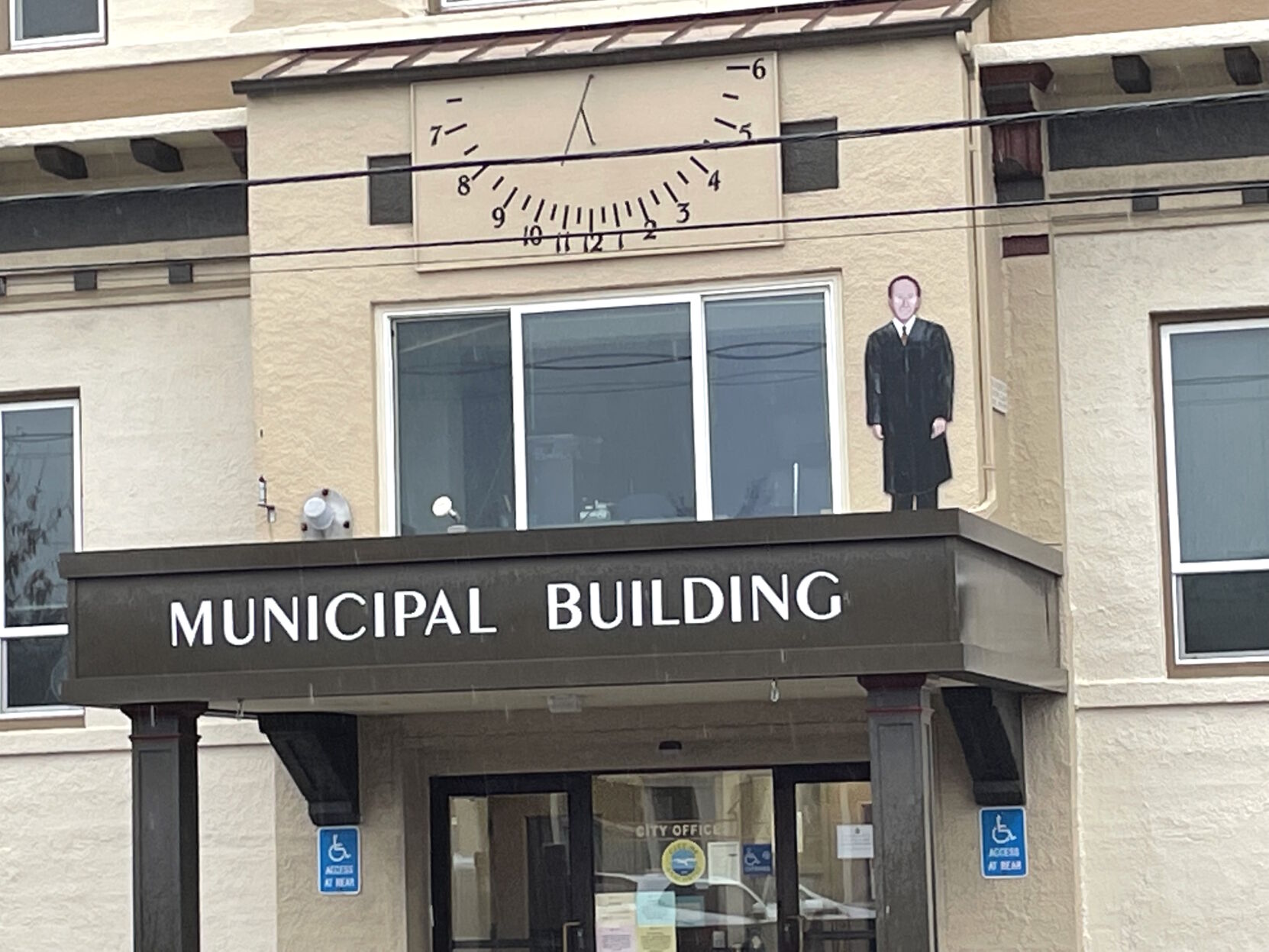With mortgage rates hovering near 7%, Moody’s chief economist Mark Zandi warns of a looming slump in the U.S. housing market unless rates decline soon. The housing sector, once a stabilizer, is now becoming a “full-blown headwind” for the economy.
Moody’s chief economist warns of deepening housing market slump as 7% mortgage rates bite

Key Takeaways:
- Persistent 7% mortgage rates are hurting the housing market.
- Mark Zandi raises warning from “yellow flare” to “red flare.”
- Homebuilders retreat due to unsustainable mortgage rate buydowns.
- House prices have flattened and may decline.
- Housing sector becomes a “full-blown headwind” for the economy.
Moody’s Economist Raises ‘Red Flare’ Over Housing Market
Persistently elevated mortgage rates hovering near 7% are exerting significant pressure on the U.S. housing market, leading to a dire warning from Moody’s chief economist Mark Zandi. In a series of posts on Twitter, Zandi escalated his caution from a “yellow flare” to a “red flare” as conditions continue to deteriorate.
Mortgage Rates Crushing Demand
“Home sales, homebuilding, and even house prices are set to slump unless mortgage rates decline materially from their current near 7% soon,” Zandi wrote. “That, however, seems unlikely.” The high mortgage rates are not only dampening housing demand but also stalling price growth and construction activity.
Homebuilders Retreat Amid Unsustainable Costs
While overall home sales have been sharply depressed, homebuilders had previously propped up new home sales by offering mortgage rate buydowns. However, these buydown costs have become unsustainable. “Many builders are now backing away,” Zandi noted, pointing to delays in land purchases from land banks—a precursor to future construction activity. This indicates that new home sales, housing starts, and completions are expected to drop in the coming months.
Flattening House Prices Signal Trouble
The resilience in house prices is also fading. “House price growth had held up well. But this, too, is changing,” Zandi observed. Prices have flattened and are likely to decline due to rising supply, affordability challenges, and demographic shifts. “Locked-in homeowners must move,” he added, referring to those who secured low-rate mortgages during the pandemic. “They can only work around these needs for so long.”
A ‘Full-Blown Headwind’ for the Economy
Zandi concluded with a broader warning: the housing sector, once a stabilizer in the post-COVID recovery, is now turning into a “full-blown headwind” for the U.S. economy. This shift raises fresh concerns about the economic outlook into late 2025 and early 2026. The trajectory of growth and the Federal Reserve’s path forward are now under scrutiny as the housing market’s struggles compound other economic worries.
Conclusion
Without a meaningful drop in mortgage rates soon, the U.S. housing market faces a deepening slump with far-reaching implications. As Zandi’s “red flare” signals, the combination of high rates, retreating builders, and flattening prices could transform the housing sector from an economic pillar into a significant obstacle in the years ahead.











